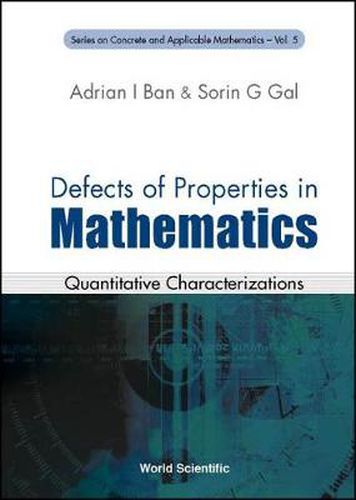Readings Newsletter
Become a Readings Member to make your shopping experience even easier.
Sign in or sign up for free!
You’re not far away from qualifying for FREE standard shipping within Australia
You’ve qualified for FREE standard shipping within Australia
The cart is loading…






An introduction to a method of research which can be used in various fields of mathematics. It examines, in a systematic way, the quantitative characterizations of the deviation from a (given) property , called the defect of a property , in: set theory; topology; measure theory; real, complex and functional analysis; algebra; geometry; number theory; and fuzzy mathematics. Besides well-known defects , the text introduces and studies new ones, such as: measures of noncompactness for fuzzy sets; fuzzy and intuitionistic entropies; the defect of (sub, super)additivity; complementarity; monotonicity for set functions; the defect of convexity; monotonicity; differentiability for real functions; the defect of equality for inequalities; the defect of orthogonality for sets and defects of properties for linear operators in normed spaces; defects of properties (commutativity, associativity and more) for binary operations; defects of orthogonality and parallelness in Euclidean and non-Euclidean geometries; defects of integer, perfect, prime and amicable numbers; and the defect of tautology in fuzzy logic.
$9.00 standard shipping within Australia
FREE standard shipping within Australia for orders over $100.00
Express & International shipping calculated at checkout
An introduction to a method of research which can be used in various fields of mathematics. It examines, in a systematic way, the quantitative characterizations of the deviation from a (given) property , called the defect of a property , in: set theory; topology; measure theory; real, complex and functional analysis; algebra; geometry; number theory; and fuzzy mathematics. Besides well-known defects , the text introduces and studies new ones, such as: measures of noncompactness for fuzzy sets; fuzzy and intuitionistic entropies; the defect of (sub, super)additivity; complementarity; monotonicity for set functions; the defect of convexity; monotonicity; differentiability for real functions; the defect of equality for inequalities; the defect of orthogonality for sets and defects of properties for linear operators in normed spaces; defects of properties (commutativity, associativity and more) for binary operations; defects of orthogonality and parallelness in Euclidean and non-Euclidean geometries; defects of integer, perfect, prime and amicable numbers; and the defect of tautology in fuzzy logic.